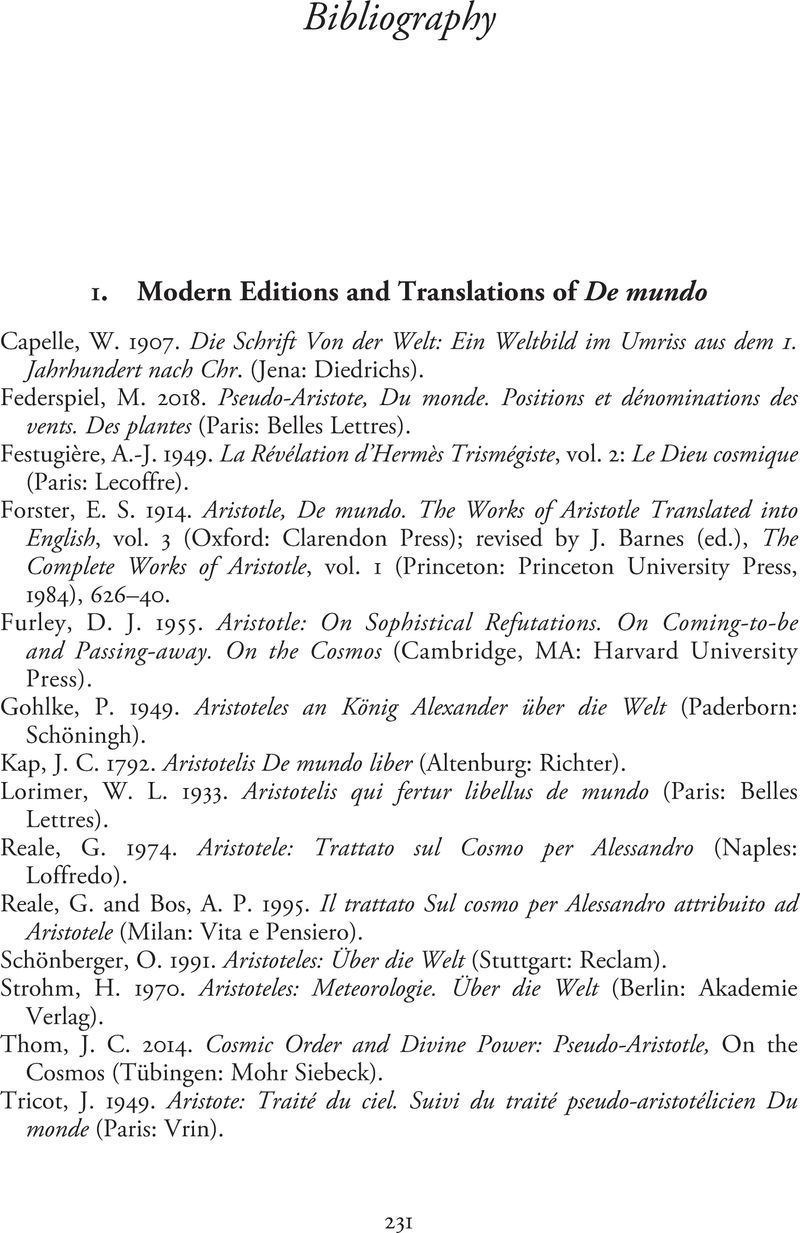Book contents
- Pseudo-Aristotle: De mundo (On the Cosmos)
- Pseudo-Aristotle: De mundo (On the Cosmos)
- Copyright page
- Contents
- Figures
- Contributors
- Preface
- Abbreviations
- Chapter 1 Introduction
- Chapter 2 On Philosophy and Its Proper Subject (Chapter 1)
- Chapter 3 The Heavenly Sphere (Chapter 2, 391b9–392a31)
- Chapter 4 The Sublunary Domain (Chapters 2–3, 392a31–393a8)
- Chapter 5 Geography (Chapter 3, 393a9–394a6)
- Chapter 6 Meteorology (Chapter 4)
- Chapter 7 The Eternity of the Cosmos (Chapter 5)
- Chapter 8 God’s Relation to the Cosmos (Chapter 6)
- Chapter 9 God’s Many Names (Chapter 7)
- Bibliography
- Index
- References
Bibliography
Published online by Cambridge University Press: 10 December 2020
- Pseudo-Aristotle: De mundo (On the Cosmos)
- Pseudo-Aristotle: De mundo (On the Cosmos)
- Copyright page
- Contents
- Figures
- Contributors
- Preface
- Abbreviations
- Chapter 1 Introduction
- Chapter 2 On Philosophy and Its Proper Subject (Chapter 1)
- Chapter 3 The Heavenly Sphere (Chapter 2, 391b9–392a31)
- Chapter 4 The Sublunary Domain (Chapters 2–3, 392a31–393a8)
- Chapter 5 Geography (Chapter 3, 393a9–394a6)
- Chapter 6 Meteorology (Chapter 4)
- Chapter 7 The Eternity of the Cosmos (Chapter 5)
- Chapter 8 God’s Relation to the Cosmos (Chapter 6)
- Chapter 9 God’s Many Names (Chapter 7)
- Bibliography
- Index
- References
Summary

- Type
- Chapter
- Information
- Pseudo-Aristotle: De Mundo (On the Cosmos)A Commentary, pp. 231 - 242Publisher: Cambridge University PressPrint publication year: 2020



